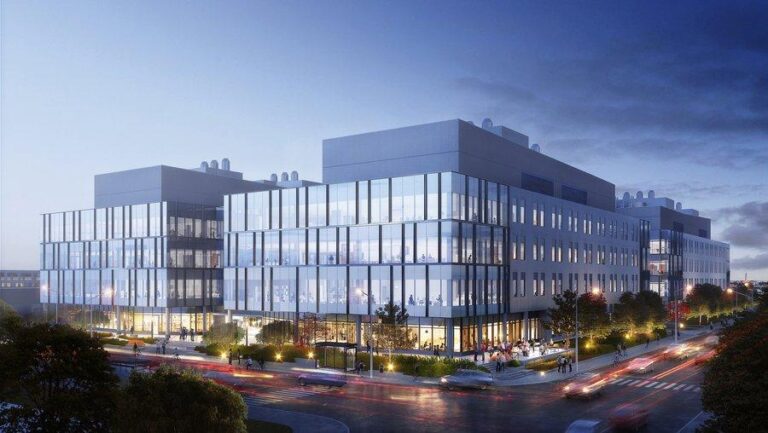Top Life Sciences Clusters in the U.S.: Boston, San Francisco Bay, and San Diego
According to the latest analysis from Business Facilities Magazine, Greater Boston, the San Francisco Bay Area, and San Diego have emerged as the foremost centers for life sciences innovation in the United States. These regions consistently attract substantial capital, elite scientific talent, and pioneering research projects, cementing their leadership in biotechnology, pharmaceuticals, and allied fields. Their success is fueled by dynamic innovation ecosystems, strong collaborations with academic institutions, and business-friendly environments, positioning them as key drivers in the rapidly advancing life sciences sector.
Greater Boston: A Powerhouse of Research and Innovation
Greater Boston stands at the forefront of the nation‚Äôs life sciences revolution, distinguished by its unparalleled research infrastructure. Home to prestigious institutions such as MIT and Harvard University, alongside a network of leading hospitals, the region offers a collaborative environment that accelerates scientific discovery. Investments in cutting-edge facilities‚ÄĒincluding specialized incubators and advanced wet labs‚ÄĒhave fostered a thriving ecosystem where both startups and established companies develop breakthroughs in biotechnology, pharmaceuticals, and medical devices.
Key strengths of Greater Boston’s life sciences landscape include:
- Access to a deep pool of highly skilled graduates from top-tier universities and research centers
- Robust public-private collaborations that expedite the commercialization of scientific innovations
- Advanced computational biology and data analytics capabilities driving progress in precision medicine
| Research Institution | Annual Research Funding | Number of Active Startups |
|---|---|---|
| Harvard Medical School | $1.2 Billion | 120+ |
| MIT Biological Engineering | $850 Million | 95+ |
| Mass General Brigham | $700 Million | 110+ |
San Francisco Bay Area: The Epicenter of Biotech Startups and Venture Capital
In recent years, the San Francisco Bay Area has solidified its position as a premier incubator for biotech startups, buoyed by significant venture capital inflows. The region’s unique combination of world-class research universities, established pharmaceutical companies, and a vibrant entrepreneurial culture has created fertile ground for innovation. Emerging companies specializing in gene editing, personalized therapies, and biomanufacturing benefit from accelerators and incubators that offer essential mentorship and resources.
Factors fueling the Bay Area’s biotech surge include:
- Close proximity to leading research institutions such as UCSF and Stanford
- A dense network of venture capital firms focused on life sciences
- Access to experienced scientists and interdisciplinary collaborators
- Strong synergies between academic research and commercial enterprises
| Indicator | San Francisco Bay Area | U.S. National Average |
|---|---|---|
| Venture Capital Investment (2023) | $4.3 Billion | $1.2 Billion |
| Number of Biotech Startups | 180 | 75 |
| Biotech Employment Growth Rate | 12.5% | 5.8% |
San Diego: Leveraging Strategic Partnerships to Enhance Life Sciences Growth
San Diego has strengthened its position as a vital life sciences hub by cultivating strategic partnerships among industry leaders, emerging biotech companies, and academic institutions. These alliances foster innovation through shared knowledge and resources, accelerating the development of novel therapies and medical technologies. The region benefits from a cohesive network of universities, venture capital firms, and government agencies, all committed to supporting scalable biotech enterprises. This collaborative environment helps San Diego attract premier talent and investment.
Key focus areas of San Diego’s collaborative efforts include:
- Cutting-edge research collaborations advancing genetic engineering and personalized medicine
- Investment in modern laboratory infrastructure and shared innovation centers
- Talent cultivation programs partnering with local universities to prepare future scientists and healthcare professionals
| Partner Category | Primary Contribution | Resulting Impact |
|---|---|---|
| Academic Institutions | Innovative research and talent development | High-impact scientific publications and skilled workforce |
| Biotech Startups | Development of novel therapeutics | Advancement of new treatments into clinical trials |
| Government Agencies | Regulatory support and funding | Faster project approvals and financial backing |
Promoting Inter-Regional Collaboration to Sustain Industry Momentum
Experts agree that maintaining the growth trajectory of these leading life sciences clusters requires fostering strong connections across regions. By encouraging partnerships that span Greater Boston, the San Francisco Bay Area, and San Diego, stakeholders can pool diverse expertise, share critical resources, and speed up innovation cycles. Such cross-regional collaboration creates a fertile environment where research breakthroughs, clinical development, and manufacturing advancements converge, enhancing global competitiveness.
Essential elements for effective inter-regional cooperation include:
- Regulatory harmonization: Aligning compliance frameworks to minimize delays and streamline market access
- Shared data platforms: Enabling real-time exchange of scientific findings and market insights
- Joint workforce development: Expanding education and training programs to cultivate a versatile talent pool
- Investment in shared infrastructure: Creating collaborative facilities that serve multiple regions
| Region | Collaborative Program | Primary Advantage |
|---|---|---|
| Greater Boston | BioInnovation Hubs | Access to premier academic research |
| San Francisco Bay Area | Data-Sharing Networks | Improved predictive analytics capabilities |
| San Diego | Cross-Training Initiatives | Enhanced workforce adaptability and growth |
Conclusion: Sustaining Leadership in Life Sciences Innovation
As Greater Boston, the San Francisco Bay Area, and San Diego continue to dominate the U.S. life sciences landscape, their ongoing expansion highlights the vital role these hubs play in advancing healthcare and biotechnology. With strong investment flows, access to exceptional talent, and collaborative ecosystems, these regions are well-positioned to spearhead the next generation of scientific breakthroughs and economic growth. Business Facilities Magazine will continue monitoring these dynamic markets as they shape the future of the life sciences industry.




